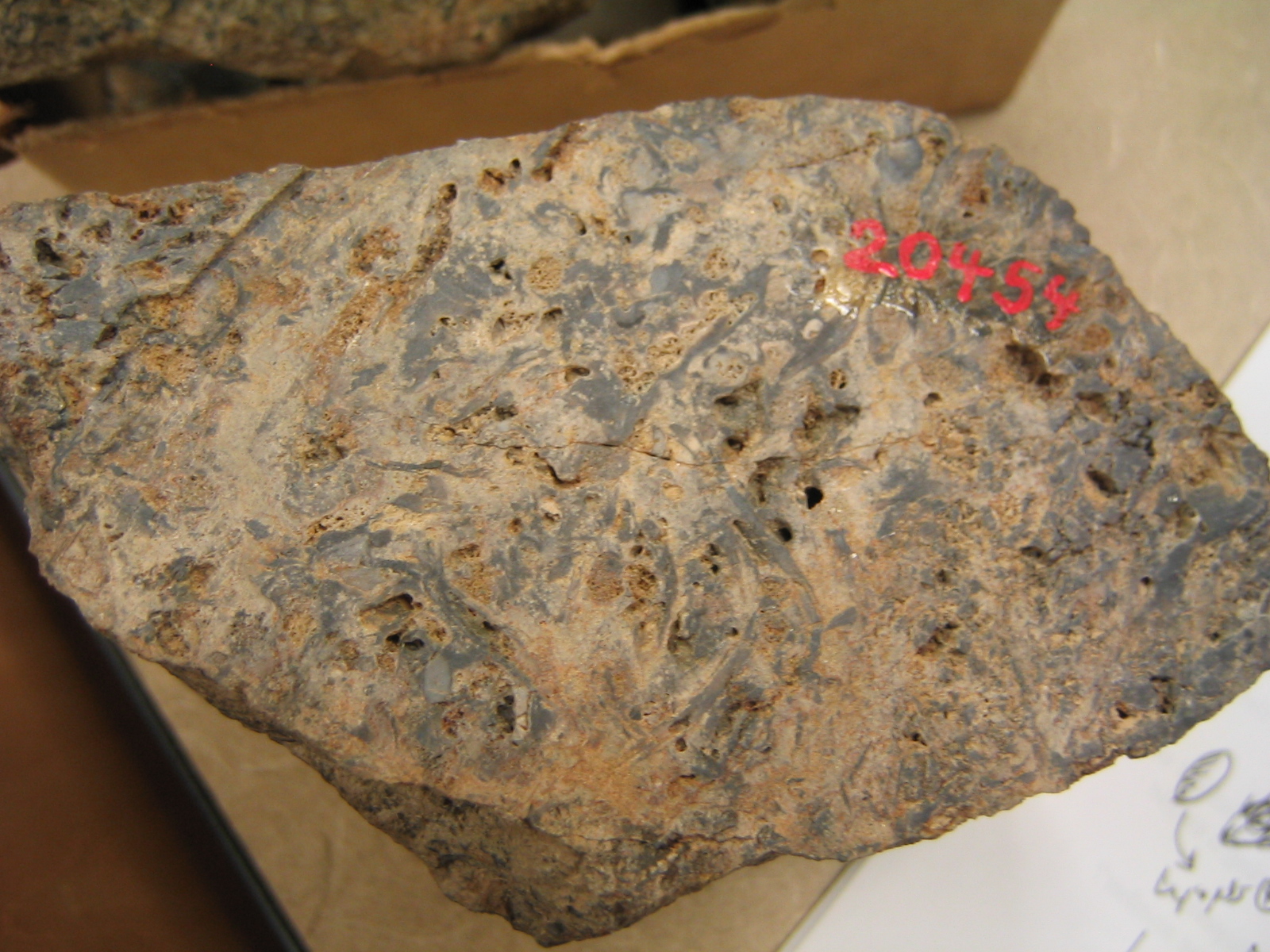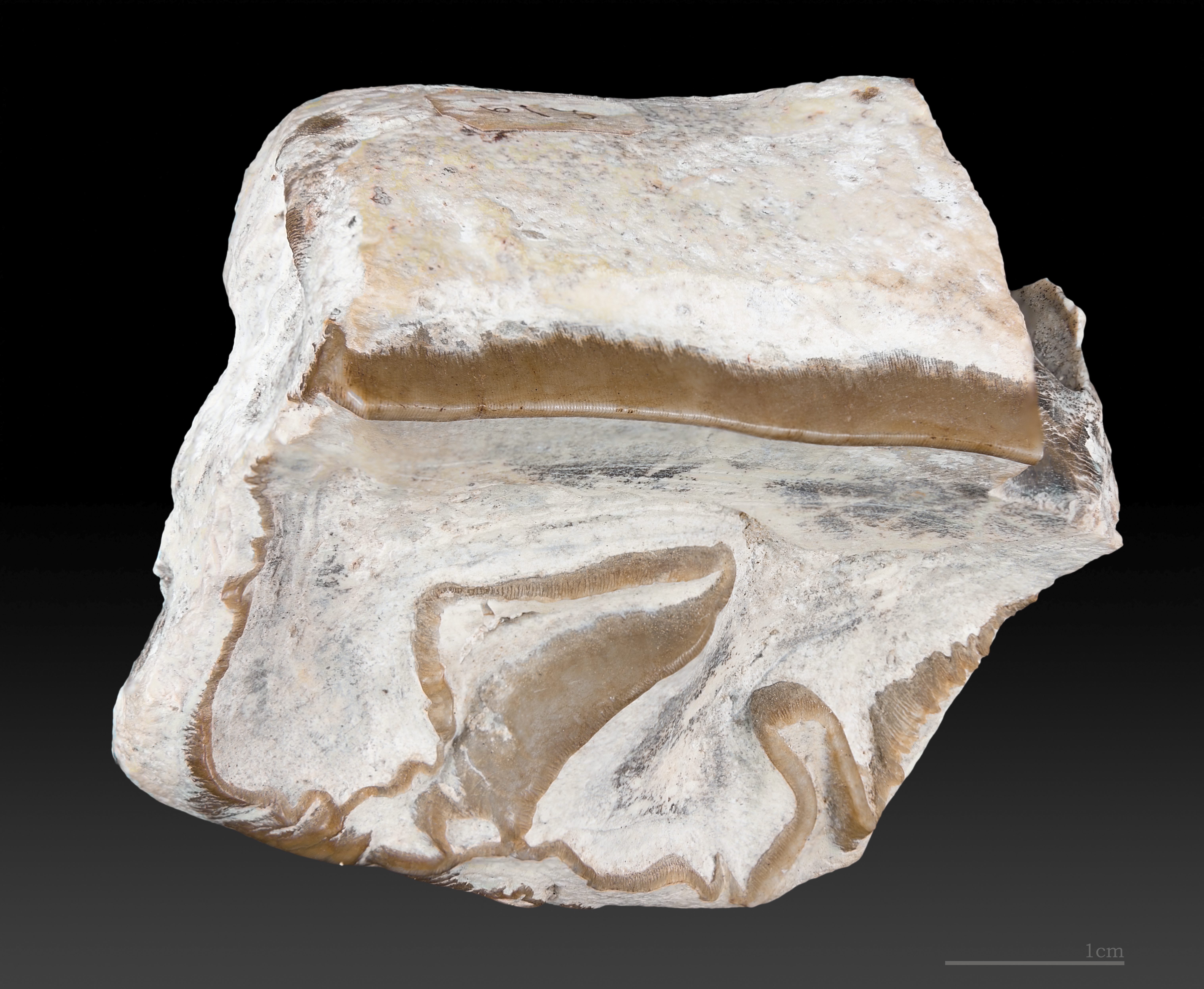|
Rhus Garwellii
''Rhus garwellii'' is an extinct species of flowering plant in the sumac family Anacardiaceae. The species is known from fossil leaves found in the early Eocene deposits of northern Washington State, United States. The species was first described from fossil leaves found in the Klondike Mountain Formation. ''R. garwellii'' likely hybridized with the other Klondike Mountain formation sumac species '' R. boothillensis'', '' R. malloryi'', and '' R. republicensis''. Distribution and paleoenvironment ''Rhus garwellii'' is known from specimens which are recovered from an outcrop of the early Eocene, Ypresian Klondike Mountain Formation in Republic. The Klondike Mountain Formation preserves an upland temperate flora which was first interpreted as being microthermal, however further study has shown the flora to be more mesothermal in nature. The plant community preserved in the Klondike Mountain formation is a mixed conifer–broadleaf forest with large pollen elements of birch ... [...More Info...] [...Related Items...] OR: [Wikipedia] [Google] [Baidu] |
Ypresian
In the geologic timescale the Ypresian is the oldest age or lowest stratigraphic stage of the Eocene. It spans the time between , is preceded by the Thanetian Age (part of the Paleocene) and is followed by the Eocene Lutetian Age. The Ypresian is consistent with the lower Eocene. Events The Ypresian Age begins during the throes of the Paleocene–Eocene Thermal Maximum (PETM). The Fur Formation in Denmark, the Messel shales in Germany, the Oise amber of France and Cambay amber of India are of this age. The Eocene Okanagan Highlands are an uplands subtropical to temperate series of lakes from the Ypresian. Stratigraphic definition The Ypresian Stage was introduced in scientific literature by Belgian geologist André Hubert Dumont in 1850. The Ypresian is named after the Flemish city of Ypres in Belgium (spelled ''Ieper'' in Dutch). The definitions of the original stage were totally different from the modern ones. The Ypresian shares its name with the Belgian Ieper Group (French: ... [...More Info...] [...Related Items...] OR: [Wikipedia] [Google] [Baidu] |
Birch
A birch is a thin-leaved deciduous hardwood tree of the genus ''Betula'' (), in the family Betulaceae, which also includes alders, hazels, and hornbeams. It is closely related to the beech- oak family Fagaceae. The genus ''Betula'' contains 30 to 60 known taxa of which 11 are on the IUCN 2011 Red List of Threatened Species. They are a typically rather short-lived pioneer species widespread in the Northern Hemisphere, particularly in northern areas of temperate climates and in boreal climates. Description Birch species are generally small to medium-sized trees or shrubs, mostly of northern temperate and boreal climates. The simple leaves are alternate, singly or doubly serrate, feather-veined, petiolate and stipulate. They often appear in pairs, but these pairs are really borne on spur-like, two-leaved, lateral branchlets. The fruit is a small samara, although the wings may be obscure in some species. They differ from the alders (''Alnus'', another genus in the family) ... [...More Info...] [...Related Items...] OR: [Wikipedia] [Google] [Baidu] |
Type (biology)
In biology, a type is a particular wiktionary:en:specimen, specimen (or in some cases a group of specimens) of an organism to which the scientific name of that organism is formally attached. In other words, a type is an example that serves to anchor or centralizes the defining features of that particular taxon. In older usage (pre-1900 in botany), a type was a taxon rather than a specimen. A taxon is a scientifically named grouping of organisms with other like organisms, a set (mathematics), set that includes some organisms and excludes others, based on a detailed published description (for example a species description) and on the provision of type material, which is usually available to scientists for examination in a major museum research collection, or similar institution. Type specimen According to a precise set of rules laid down in the International Code of Zoological Nomenclature (ICZN) and the International Code of Nomenclature for algae, fungi, and plants (ICN), the ... [...More Info...] [...Related Items...] OR: [Wikipedia] [Google] [Baidu] |
Georgia College And State University
Georgia College & State University (Georgia College or GC) is a public liberal arts university in Milledgeville, Georgia. The university enrolls approximately 7,000 students and is a member of the University System of Georgia and the Council of Public Liberal Arts Colleges. Georgia College was designated Georgia's "Public Liberal Arts University" in 1996 by the Georgia Board of Regents. Students pursue majors and graduate degree programs throughout the university's four colleges: College of Arts & Sciences, J. Whitney Bunting College of Business and Technology, John H. Lounsbury College of Education, and College of Health Sciences. Georgia College Athletics' 11 teams compete in the NCAA Division II Peach Belt Conference. History Georgia College was chartered in 1889 as Georgia Normal and Industrial College. Its emphasis at the time was largely vocational, and its major task was to prepare young women for teaching or industrial careers. In 1917, in keeping with economic and ... [...More Info...] [...Related Items...] OR: [Wikipedia] [Google] [Baidu] |
Arizona State University
Arizona State University (Arizona State or ASU) is a public research university in the Phoenix metropolitan area. Founded in 1885 by the 13th Arizona Territorial Legislature, ASU is one of the largest public universities by enrollment in the U.S. One of three universities governed by the Arizona Board of Regents, ASU is a member of the Universities Research Association and classified among "R1: Doctoral Universities – Very High Research Activity". ASU has nearly 150,000 students attending classes, with more than 38,000 students attending online, and 90,000 undergraduates and nearly 20,000 postgraduates across its five campuses and four regional learning centers throughout Arizona. ASU offers 350 degree options from its 17 colleges and more than 170 cross-discipline centers and institutes for undergraduates students, as well as more than 400 graduate degree and certificate programs. The Arizona State Sun Devils compete in 26 varsity-level sports in the NCAA Division ... [...More Info...] [...Related Items...] OR: [Wikipedia] [Google] [Baidu] |
Paleobotanist
Paleobotany, which is also spelled as palaeobotany, is the branch of botany dealing with the recovery and identification of plant remains from geological contexts, and their use for the biological reconstruction of past environments (paleogeography), and the evolutionary history of plants, with a bearing upon the evolution of life in general. A synonym is paleophytology. It is a component of paleontology and paleobiology. The prefix ''palaeo-'' means "ancient, old", and is derived from the Greek adjective , . Paleobotany includes the study of terrestrial plant fossils, as well as the study of prehistoric marine photoautotrophs, such as photosynthetic algae, seaweeds or kelp. A closely related field is palynology, which is the study of fossilized and extant spores and pollen. Paleobotany is important in the reconstruction of ancient ecological systems and climate, known as paleoecology and paleoclimatology respectively; and is fundamental to the study of green plant develo ... [...More Info...] [...Related Items...] OR: [Wikipedia] [Google] [Baidu] |
Stonerose Interpretive Center
The Stonerose Interpretive center & Eocene Fossil Site is a 501c(3) non-profit public museum and fossil dig located in Republic, Washington. The center was established in 1989 and houses fossils that have been featured in ''National Geographic Magazine'', '' Sunset magazine'', and numerous scientific works. History The original fossil site, located along Highway 20 in Republic Ferry County, was first discovered in 1977 by artist Wesley "Wes" Wehr and paleontologist Kirk Johnson, than a high school student from Seattle. The idea for the Stonerose Interpretive Center was the result of conversations in the mid-1980's between Wes Wehr and then Republic City council member Bert Chadick, who had noticed Wehr collecting fossils near the city hall. They considered the possible economic impact of a public interpretive center and fossil dig, allowing people to explore a "world class" fossil site, interact with researchers studying the finds, and show that important science could ... [...More Info...] [...Related Items...] OR: [Wikipedia] [Google] [Baidu] |
Paleobotany
Paleobotany, which is also spelled as palaeobotany, is the branch of botany dealing with the recovery and identification of plant remains from geological contexts, and their use for the biological reconstruction of past environments (paleogeography), and the evolutionary history of plants, with a bearing upon the evolution of life in general. A synonym is paleophytology. It is a component of paleontology and paleobiology. The prefix ''palaeo-'' means "ancient, old", and is derived from the Greek adjective , . Paleobotany includes the study of terrestrial plant fossils, as well as the study of prehistoric marine photoautotrophs, such as photosynthetic algae, seaweeds or kelp. A closely related field is palynology, which is the study of fossilized and extant spores and pollen. Paleobotany is important in the reconstruction of ancient ecological systems and climate, known as paleoecology and paleoclimatology respectively; and is fundamental to the study of green pla ... [...More Info...] [...Related Items...] OR: [Wikipedia] [Google] [Baidu] |
Paratype
In zoology and botany, a paratype is a specimen of an organism that helps define what the scientific name of a species and other taxon actually represents, but it is not the holotype (and in botany is also neither an isotype nor a syntype). Often there is more than one paratype. Paratypes are usually held in museum research collections. The exact meaning of the term ''paratype'' when it is used in zoology is not the same as the meaning when it is used in botany. In both cases however, this term is used in conjunction with ''holotype''. Zoology In zoological nomenclature, a paratype is officially defined as "Each specimen of a type series other than the holotype.", ''International Code of Zoological Nomenclature'' In turn, this definition relies on the definition of a "type series". A type series is the material (specimens of organisms) that was cited in the original publication of the new species or subspecies, and was not excluded from being type material by the author (t ... [...More Info...] [...Related Items...] OR: [Wikipedia] [Google] [Baidu] |
Holotype
A holotype is a single physical example (or illustration) of an organism, known to have been used when the species (or lower-ranked taxon) was formally described. It is either the single such physical example (or illustration) or one of several examples, but explicitly designated as the holotype. Under the International Code of Zoological Nomenclature (ICZN), a holotype is one of several kinds of name-bearing types. In the International Code of Nomenclature for algae, fungi, and plants (ICN) and ICZN, the definitions of types are similar in intent but not identical in terminology or underlying concept. For example, the holotype for the butterfly '' Plebejus idas longinus'' is a preserved specimen of that subspecies, held by the Museum of Comparative Zoology at Harvard University. In botany, an isotype is a duplicate of the holotype, where holotype and isotypes are often pieces from the same individual plant or samples from the same gathering. A holotype is not necessaril ... [...More Info...] [...Related Items...] OR: [Wikipedia] [Google] [Baidu] |
Type Specimen
In biology, a type is a particular specimen (or in some cases a group of specimens) of an organism to which the scientific name of that organism is formally attached. In other words, a type is an example that serves to anchor or centralizes the defining features of that particular taxon. In older usage (pre-1900 in botany), a type was a taxon rather than a specimen. A taxon is a scientifically named grouping of organisms with other like organisms, a set that includes some organisms and excludes others, based on a detailed published description (for example a species description) and on the provision of type material, which is usually available to scientists for examination in a major museum research collection, or similar institution. Type specimen According to a precise set of rules laid down in the International Code of Zoological Nomenclature (ICZN) and the International Code of Nomenclature for algae, fungi, and plants (ICN), the scientific name of every taxon is almost ... [...More Info...] [...Related Items...] OR: [Wikipedia] [Google] [Baidu] |
Arecaceae
The Arecaceae is a family of perennial flowering plants in the monocot order Arecales. Their growth form can be climbers, shrubs, tree-like and stemless plants, all commonly known as palms. Those having a tree-like form are called palm trees. Currently, 181 genera with around 2,600 species are known, most of which are restricted to tropical and subtropical climates. Most palms are distinguished by their large, compound, evergreen leaves, known as fronds, arranged at the top of an unbranched stem. However, palms exhibit an enormous diversity in physical characteristics and inhabit nearly every type of habitat within their range, from rainforests to deserts. Palms are among the best known and most extensively cultivated plant families. They have been important to humans throughout much of history. Many common products and foods are derived from palms. In contemporary times, palms are also widely used in landscaping. In many historical cultures, because of their imp ... [...More Info...] [...Related Items...] OR: [Wikipedia] [Google] [Baidu] |

.jpg)





